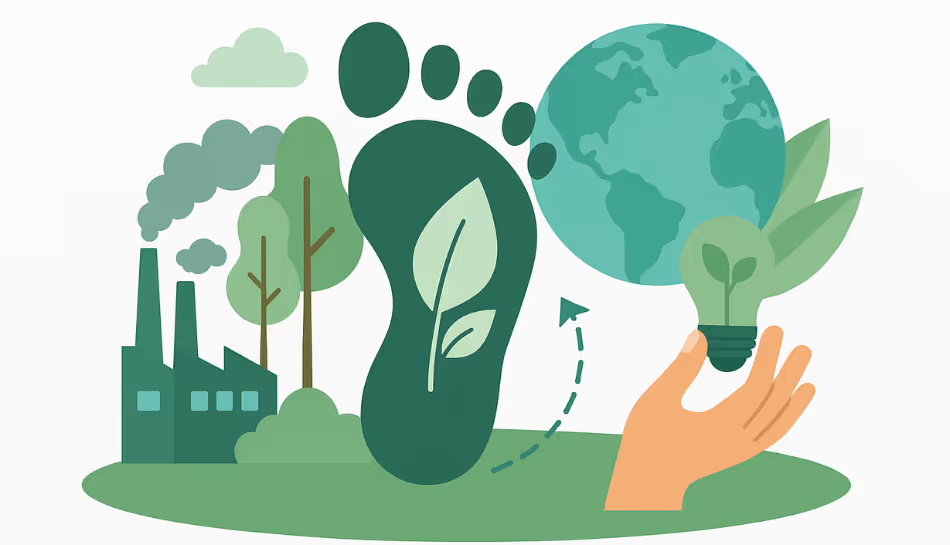
In today’s world, where climate change is becoming increasingly serious, one term keeps popping up: carbon footprint. But what exactly is it? And more importantly, how can you reduce it?
Let’s break it down in a simple way and explore practical tips to lower your carbon emissions.
What Is a Carbon Footprint?
Your carbon footprint is the total amount of greenhouse gases, especially carbon dioxide (CO₂), released into the atmosphere as a result of your actions. It’s measured in units of carbon dioxide equivalent (CO₂e).
In simpler words, it’s a way of calculating the environmental impact of everything you do, from the food you eat, the car you drive, to the electricity that powers your home.
What Are Carbon Emissions?
Carbon emissions refer specifically to the release of CO₂ into the air, usually from burning fossil fuels like coal, oil, and gas. These emissions trap heat in our atmosphere and contribute to global warming.
They’re produced by:
- Vehicles and airplanes
- Factories and power plants
- Homes and buildings using fossil-fuel electricity
- Agriculture and waste
Why Should You Care?
Reducing your carbon footprint helps:
- Slow down climate change
- Conserve natural resources
- Improve air quality
- Support a healthier planet for future generations
Even small changes can make a big difference when millions of people take action together.
How to Calculate Your Carbon Footprint
Calculating your carbon footprint can give you a clear picture of your personal impact. You can use online tools or apps by entering details like:
- How often you travel by car, bus, train, or flight
- Your electricity usage
- The type of food you eat (meat-heavy diets have higher footprints)
- Your shopping habits and lifestyle
This helps identify areas where you can make changes that matter.
How Can You Reduce Your Carbon Footprint?
Here are practical steps you can take in your daily life:
1. Drive Less or Drive Smart
- Use public transport, carpool, bike, or walk when possible
- Choose fuel-efficient or electric vehicles
- Keep your car well-maintained to reduce emissions
2. Switch to Renewable Energy
- Use solar panels if you can
- Choose green energy providers
- Turn off appliances when not in use
3. Eat More Plants and Less Meat
- Livestock farming produces high carbon emissions
- Eating more plant-based meals helps lower your food footprint
- Reduce food waste, buy only what you need
4. Fly Less
- Air travel is one of the biggest contributors to personal carbon emissions
- Choose trains or buses for shorter trips
- When you must fly, consider offsetting your emissions
5. Reduce, Reuse, Recycle
- Cut down on single-use plastic
- Reuse items instead of buying new
- Recycle paper, plastic, glass, and metal responsibly
6. Improve Home Efficiency
- Use energy-efficient lighting and appliances
- Insulate your home to reduce heating and cooling needs
- Reduce water usage with low-flow taps and showers
7. Support Sustainable Brands
- Buy from companies that prioritize sustainability
- Choose eco-friendly packaging and locally-made products
Final Thoughts
Your carbon footprint may seem small on its own, but every action counts. By reducing carbon emissions in your daily life, you’re contributing to a cleaner, greener future.
So next time you flip a switch, start your car, or order takeout, ask yourself: Is there a lower-carbon way to do this? Because even one step forward is a step toward a healthier planet.

